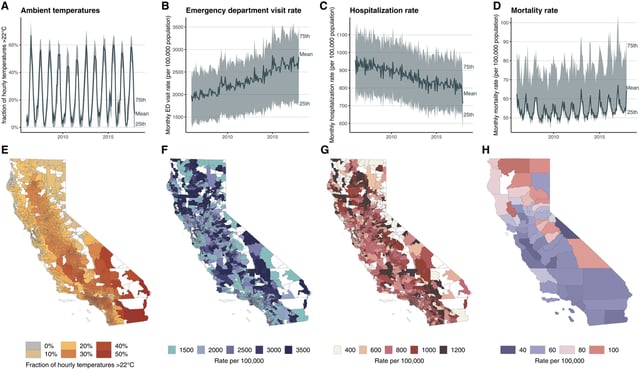Overview
- Analysis of 2006–2017 zip code–level data shows emergency department visits rise linearly as daily temperatures increase across the state
- Fewer extreme cold days are projected to reduce temperature-related deaths even as heat-driven mortalities tick up
- By midcentury, models estimate a 0.46% increase in ER visits alongside a 0.18% drop in hospitalizations and a 0.43% decline in deaths due to shifting temperatures
- Projections through 2100 foresee a 0.76% rise in emergency visits, a 0.38% decrease in hospital admissions and a 0.77% reduction in mortality under moderate warming
- Nonfatal impacts—including injuries, mental health crises and poisonings—are expected to climb with heat, with older adults most at risk from cold and younger groups more vulnerable to heat
